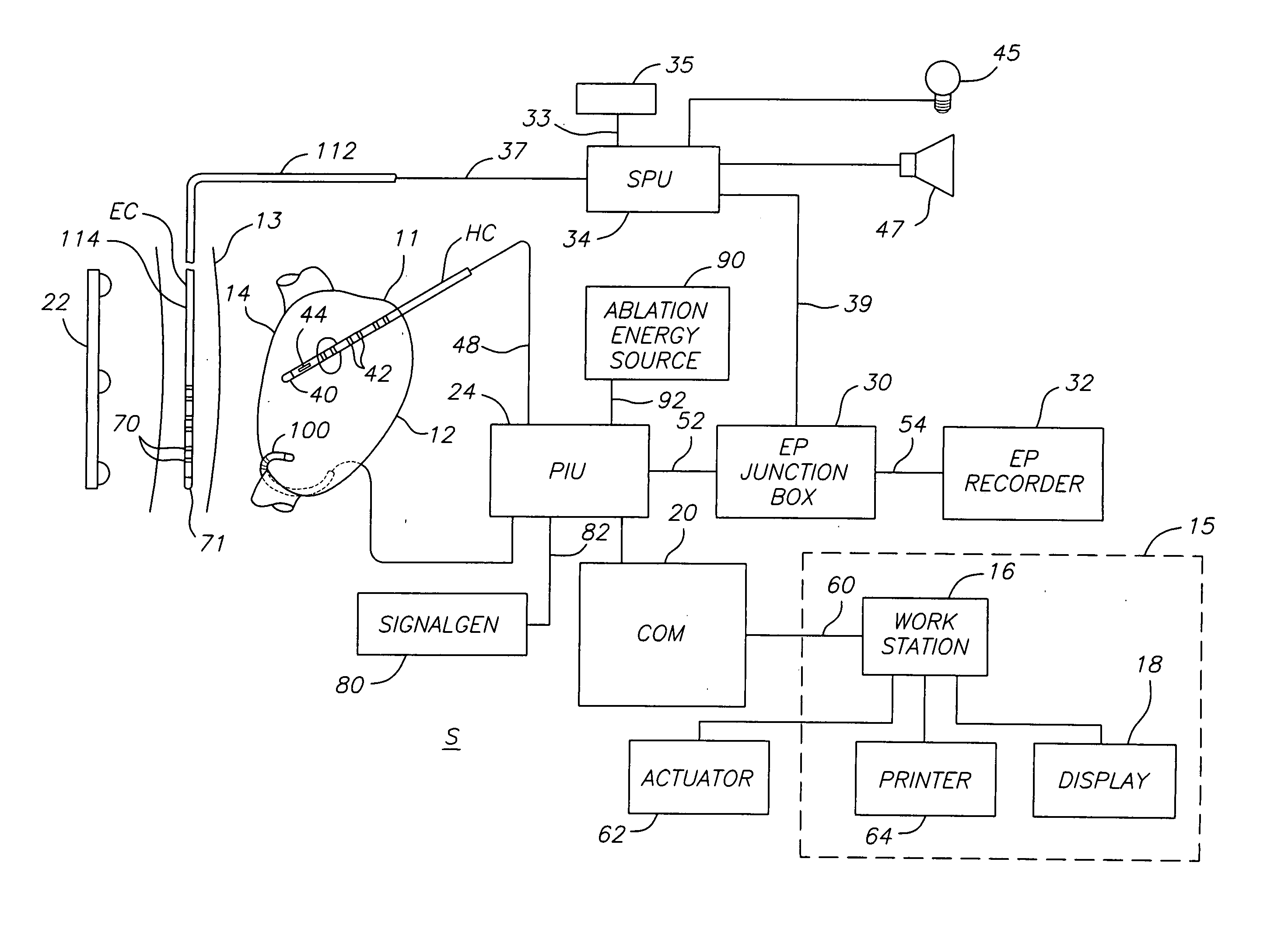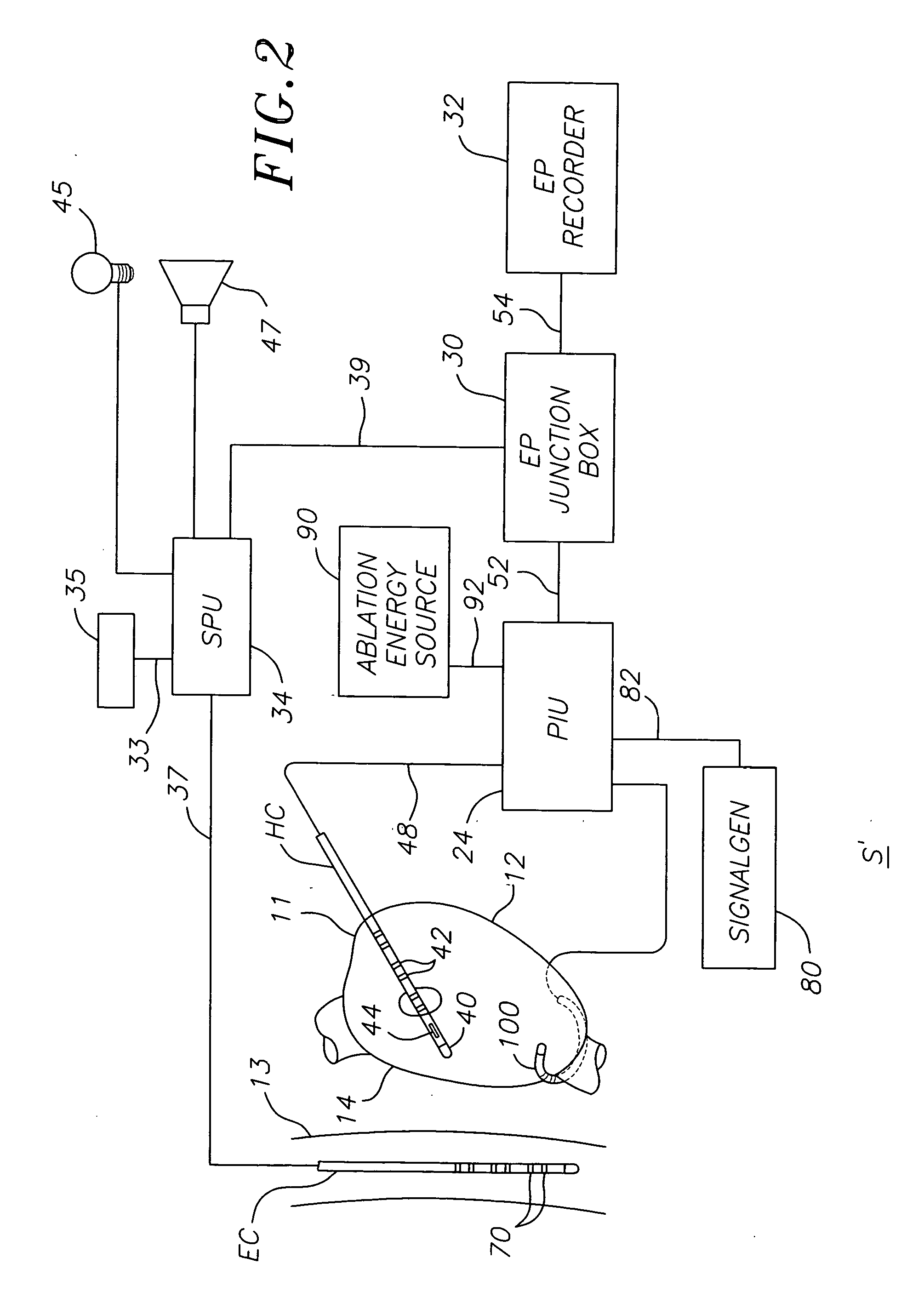System and method for monitoring esophagus proximity
a technology of esophagus and proximity measurement, which is applied in the field of system and method for measuring the proximity of the esophagus to the heart, can solve the problems of cardiac arrhythmia, proarrhythmia and long term ineffectiveness, and the effect of reducing the risk of esophagus damag
- Summary
- Abstract
- Description
- Claims
- Application Information
AI Technical Summary
Benefits of technology
Problems solved by technology
Method used
Image
Examples
Embodiment Construction
[0026] Referring to FIG. 1, the present invention provides an esophagus proximity measurement system S for continuously monitoring proximity between an endocardial or heart catheter in a patient's heart and his esophagus by detecting and monitoring proximity between the heart catheter and an esophagus catheter in the patient's esophagus. In an embodiment of the system S, as shown in FIG. 1, a heart catheter HC is positioned in the heart, e.g., the left atrium, and an esophagus probe catheter EC is positioned in the esophagus generally posterior of the heart catheter HC. In accordance with the present invention, the system S monitors in real time a separation or distance between the two catheters to provide an indication of their relative position for purposes of monitoring proximity between the heart catheter and the esophagus of the patient so as to avoid the heart catheter coming into undesirable close contact with the esophagus and damaging the esophagus. An audio and / or visual s...
PUM
 Login to View More
Login to View More Abstract
Description
Claims
Application Information
 Login to View More
Login to View More - R&D
- Intellectual Property
- Life Sciences
- Materials
- Tech Scout
- Unparalleled Data Quality
- Higher Quality Content
- 60% Fewer Hallucinations
Browse by: Latest US Patents, China's latest patents, Technical Efficacy Thesaurus, Application Domain, Technology Topic, Popular Technical Reports.
© 2025 PatSnap. All rights reserved.Legal|Privacy policy|Modern Slavery Act Transparency Statement|Sitemap|About US| Contact US: help@patsnap.com



